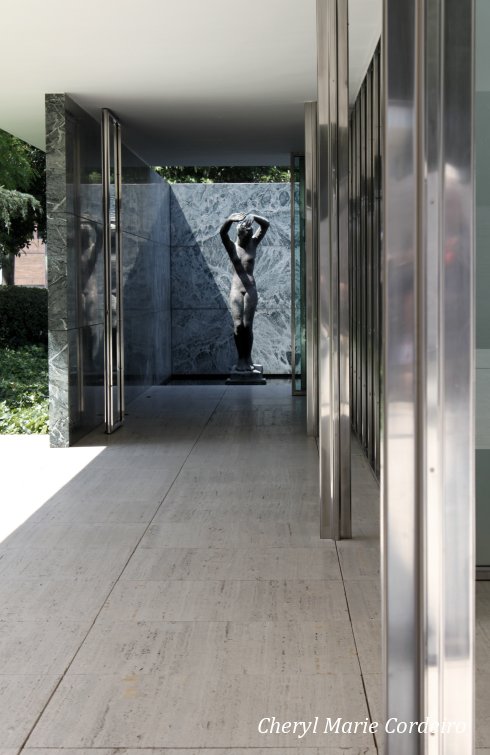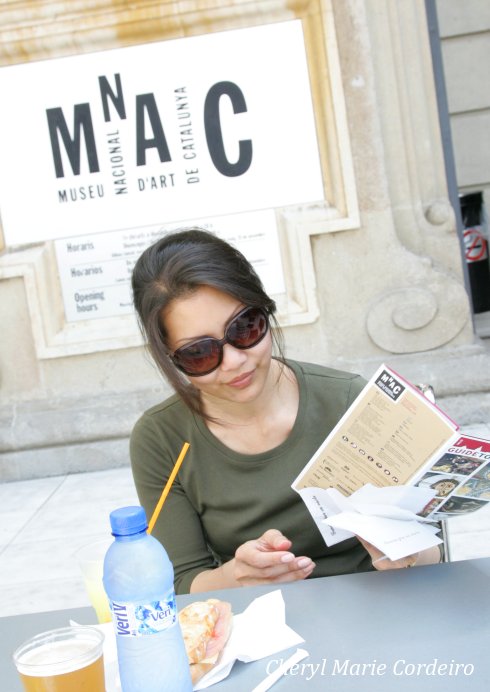
The Mies van der Rohe Pavilion is but a short walk downhill from the Museu Nacional d’Art de Catalunya, or the MNAC. It’s situated at the foot of the Montjuïc hill. The outdoor café outside the Museu Nacional offers a much needed refreshment.
JE Nilsson and CM Cordeiro Nilsson © 2011
Just below the Museu National on Montjuïc, towards the Placa d’Espanya and on its original site lies the newly rebuilt Mies van der Rohe Pavilion, originally the German Pavilion, built for the 1929 world exhibition held here in Barcelona.
The Pavilion is to me, a fundamental architectural monument from a time when the hope towards a unified and better Europe prevailed. Even beyond the field of arts history and architecture, the German architect and designer of the early 20th century, Ludwig Mies Van Der Rohe (1886-1969) was known for his works being some of the most influential of the time. He was one of the founders of modern architecture and a proponent of simplicity of style.
He coined the phrase “less is more” in referring to clarity of shapes and thoughts. So influential were his ideas from the early 1900s that today, these clean lines are visibly noted in the design of just about every current shopping mall or airport in the world. It could even be argued that the very typography of this blog, looking as it does, could be traced back to him.
Because of this, it is a little mind boggling that I found myself in the very building that in architectural form, presented this new ideology to the world, considering too that this was the fruitful result of a flow of ideas between the Russian constructivists, the Bauhaus design school in Berlin and the De Stijl group in the Netherlands, who no doubt also fetched energy and ideas from the modernists here in Barcelona.
In 1930, immediately after the Barcelona world exhibition, Mies van der Rohe became director of the Bauhaus school of Art and Architecture in Berlin, which had a major impact on western architecture. The Bauhaus was closed by the Nazis in 1933 after which Mies van der Rohe moved to the United States.
In this respect as in the value of sharing valuable points of views on various subjects, referred to in terms of the multiplicity effect of influential ideas, it feels uplifting to have been privileged to enjoy the company of colleagues from all over the world and the guidance of the faculty members at IESE’s IFP 2011 for some time this summer.
As a program, IFP 2011 covers a broad range of subjects from institutional management to leadership development, persuasive communication and teaching at executive management level. I have completely enjoyed the discussions that took place between the faculty members of the IESE Business School and the more than 40 participants (hailing from 26 different countries) in this program.
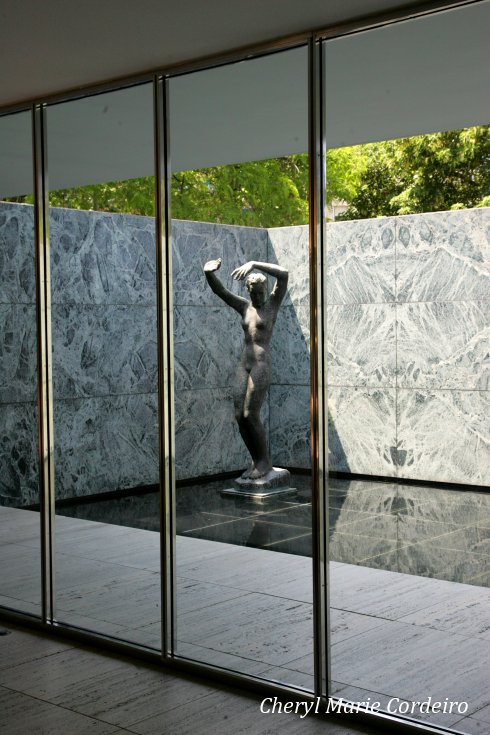
The human aspect and three dimensional – art – reduced to its bare minimum. The sculpted human body, naked. It is hard to not to draw parallels to Botticelli’s rendering of the same motif in his ‘Birth of Venus’ in Florence. Maybe the purpose was the same, for Mies van der Rohe as for Plato, who argued that contemplation of physical beauty allowed the mind to better understand spiritual beauty.
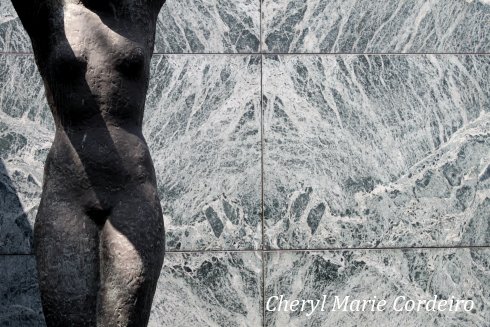
Copy of the bronze sculpture ‘Dawn’, sometimes called ‘Alba’, by Georg Kolbe.
The materials of its interior walls, chairs and sculpture and water basin (my favourite feature), leads me to question if the linearity of the English Language and the rectangular confines of this writing space, that is both Mies and not, at the same time, would allow for and be representative of the dialectic thoughts and thorough exploration of ideas of his work here.
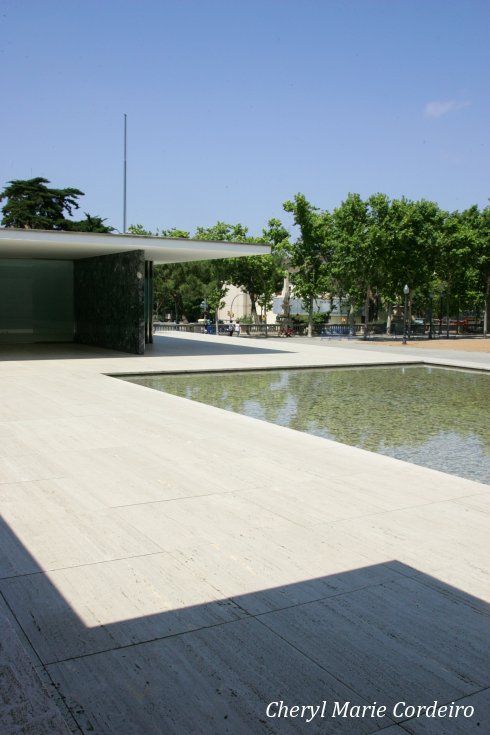
Floor, walls and roof, all reduced to its absolute minimum.
There is no lack of information at your fingertips for a proper introduction to Ludwig Mies van der Rohe and his works or his philosophy. A recommended website, with ease of navigation would be greatbuildings.com and its commentary on the Mies Pavilion in Barcelona. Below, two quotations that I can completely identify with, in his words from the website…
“For me working in Barcelona was a brilliant moment in my life.”
— Mies van der Rohe. from Frank Russell, ed. Mies van der Rohe: European Works. p20.
“Artistic expression is a manifestation of the unity of design and material. This once again underlines the necessity fo incorporating works of sculpture (or painting) creatively into the interior setting from the outset. In the great epochs of cultural history this was done by architects as a matter of course and, no doubt, without conscious reflection.”
— Mies van der Rohe. from Mies van der Rohe. Less is More. p146.
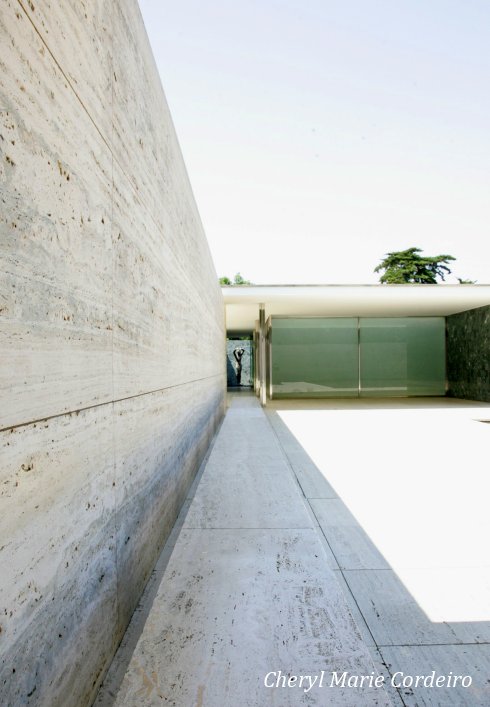
Floor, walls, roof, windows and actually a bench stretching along the wall, all reduced to its absolute minimum and in the far distance the human shapes – in bronze – synthesizing the idea that by simplifying everything down to its bare essentials, we actually say more.
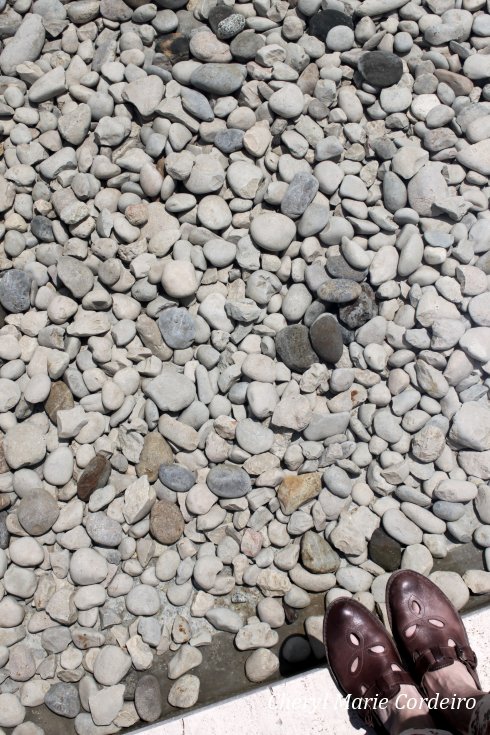
Standing at my favourite feature of the Pavilion, the water basin. How interesting that such a ‘dead’ material as stone could appear this alive when shaped by nature. An indoor basin for collecting rain water, one of the oldest and most genuinely traditional features of a house / home. As fetched from the Villas of Pompeii and so familiar from Singapore and China. A little bit too shallow but otherwise a wonderful pond for koi. I wonder if Mies ever thought about that? Probably.
As if testament to what the quiet, open yet powerful lines of the space draws in response to visitors, the most remarkable activities I witnessed in my short visit to this building, apart from the comic show of how many visitors tried to get the best vantage points to photograph Georg Kolbe’s ‘Dawn’, myself included, were two.
The first, a group of three backpack carrying individuals who simply sat along the brown and orange marble wall, their faces sober, their thoughts seemingly hovering over the pebbles and glistening mirror of water at the water basin. They were girls of just slightly more than 15 years of age, their concentrated contemplations decidedly more mature. And the second, a Japanese man of slight build with dark curls to his hair that fell around his nape just lightly brushing his pristinely starched shirt collar. His patience was endless in the unforgiving sun, as he circled the house, waiting for the space to clear so that he might get the perfect picture of his choice, of the pavilion.
I could at this point theorize on the relation between open space and lateral thinking, or open space and its bearing on human temperament etc. But as how class usually ends these days, we can talk about this forever, almost, and some lunch discussions aren’t meant to have closures. Else, what would we discuss over dinner?
The sole purpose of this the German Pavilion at the world exhibition in Bareclona, 1929, was to present the concept of modernistic design and serve as a reception hall. It never housed any secondary exhibited items.
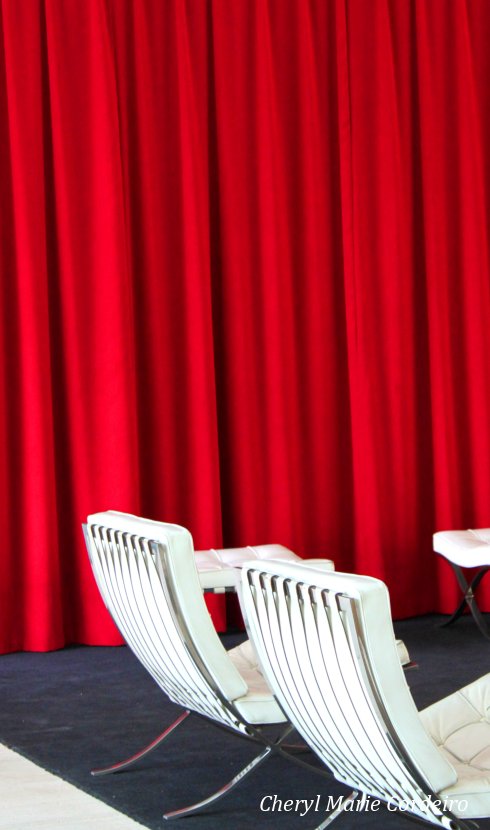
The entire concept of dusty romanticism and plush clad furniture hiding behind heavy curtains and rooms in badly need of some fresh air, simplified – not to say purified – into one single square, neatly folded red curtain.
As I see it, Mies van der Rohe’s concept of ‘less is more’ can be exemplified from a language point of view as, the more detailed description you bother to give about anything, the less number of items it will fit, until it eventually only describes one thought or one single item or maybe even nothing. On the other hand, single words such as ‘chair’ or ‘curtain’ or ‘house’, or why not single words that in turn give rise to entire concepts such as ‘democracy’ or ‘freedom’ can describe a huge number of items, thus not limiting thoughts but rather invites thinking.
Mies van der Rohe’s views, encouraging to thoroughly clean house with murky ideas, was also indeed considered as political, not to say heretical as they probably were. In the 1930s he left Germany to the USA. Even this the German pavilion in Barcelona was dissembled in 1930 and only reconstructed onto its original spot by the Urban Development Department of Barcelona in 1981-1986, after that the Spanish dictator General Franco had left power to the highly respected King Juan Carlos I of Spain in 1975.
A point in case of the magnitude of human thinking is, no wonder that the demonstrators now spending their nights and days on the Plaça Catalunya are so careful not to point their finger at the Spanish crown but directly to the International capitalists they blame for having caused the current ongoing financial crisis in Spain.
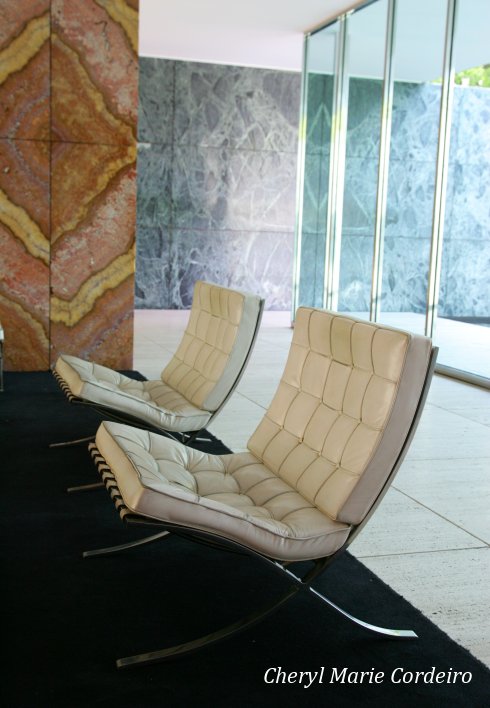
The Barcelona chairs, designed and made together with Mies’ fiancé, the German furniture designer Lilly Reich, for the German Pavilion.
It is comforting to remember that less than ten steps from my office door in the Biotech Center Building in Gothenburg, stands a set of licensed replicas of these Barcelona Chairs in black leather. Its good to know that good designs never go out of fashion.
